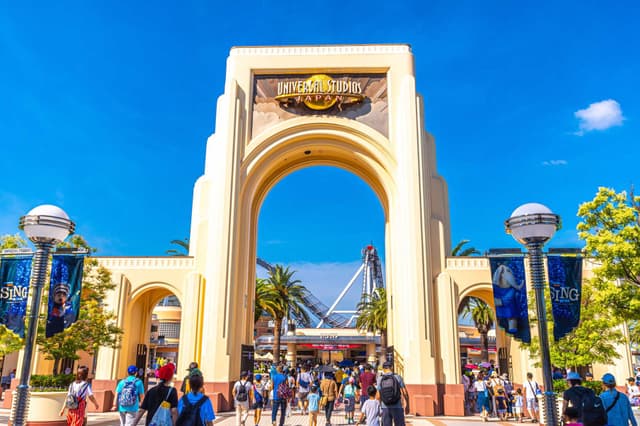

Table of contents:
When you say "Japan", for many it musters up traditional images like beautiful geisha or iconic sumo wrestling. However, for many it is the picturesque image of Mount Fuji, seen on so many Japanese-related images or media that captures the imagination.
Mount Fuji, a beacon of natural splendor and spiritual significance in Japan, is a sought-after destination for Mt Fuji hike enthusiasts and spiritual seekers alike. In a transformative move set for the summer of 2024, the journey to conquer this iconic peak will evolve with the introduction of a hiking fee on the most popular trail.
This initiative, propelled by the need to manage the growing influx of climbers and preserve the mountain's sanctity, will enhance safety and conservation efforts. As we explore this policy, we'll shed light on its potential impact on the climbing Mount Fuji experience and the preservation of Yamanashi's treasure.
Yoshida Trail: Mount Fuji's Most Popular
There are four Mt Fuji trails, each varying in difficulty. However, the Yoshida Trail, located in Yamanashi Prefecture, is the most accessible from Tokyo (about 3 hours by train), and the most suitable hiking trail for beginners. From 2014, all trails encouraged a voluntary payment of 1,000yen (US$6.70). However, from the 2024 Mt Fuji summer season, a higher mandatory payment will be introduced.

How Much Does It Cost to Climb Mount Fuji in 2024?
Starting in the July 2024 summer climbing season, hikers on the Mount Fuji Yoshida Trail will be required to pay a fee of 2,000 yen (equivalent to approximately US$13). This new fee is seen as a countermeasure to overtourism that aims to generate revenue that will be specifically allocated towards enhancing safety measures, managing trail traffic, and ensuring the cleanliness of the mountain huts and surrounding areas. It is important to note that this fee is in addition to the existing voluntary contribution of 1,000 JPY that climbers are already encouraged to make for the upkeep of the mountain.
This means that climbers will need to factor in this additional financial commitment when planning their ascent. The introduction of this fee will have an impact on the overall prices associated with climbing Mount Fuji, particularly for those choosing to take the Yoshida Trail. However, if people wish to avoid the extra cost, they can still access the three other hiking trails, all located in Shizuoka Prefecture, free of charge.
By allocating the revenue generated from these fees towards safety measures, trail management, and maintaining the cleanliness of the mountain huts and surrounding areas. Authorities aim to enhance the overall experience for tourists climbing Mount Fuji and ensure the preservation of this iconic natural landmark.
The Hiking Boom and Its Impact
As Japan's tourist sector continues to grow, so has the allure of climbing Japan's iconic Mount Fuji summit has surged. With its accessibility from Tokyo and cultural allure drawing an unprecedented number of adventurers. However, this popularity surge has strained the mountain's infrastructure, particularly on the Yoshida Trail in Yamanashi Prefecture, leading to overcrowding and concerns over the limited mountain hut accommodation and facilities. The climbing routes are now facing the challenge of accommodating the increased foot traffic without compromising safety measures or environmental integrity.

Why is the Hiking Boom a Concern?
The recent surge in popularity of 'bullet climbing' Mount Fuji has raised concerns among experts and experienced climbers. This trend involves climbers, often inexperienced novices, attempting a non-stop 3,776-metre journey to the summit in order to witness the breathtaking sunrise.
While this may seem like an exciting adventure, it is important to recognize the potential dangers associated with climbing Mount Fuji. Not only does it put the climbers themselves at significant risk, but it also exacerbates the congestion on the mountain's trails, making the overall climb Mt. Fuji experience less enjoyable for everyone involved.
One of the main risks that few people understand is the possibility of altitude sickness, which can have serious consequences if not properly addressed. Therefore, it is crucial to educate and inform climbers about the potential risks and encourage responsible hiking practices to ensure the safety and enjoyment of all those who embark on this iconic journey.
The Reaction to the Fee
Opinions are divided on the decision to levy a fee for those who climb Mt. Fuji. Some individuals hold the belief that implementing this fee is an essential step towards the conservation of the majestic mountain. They argue that the funds generated from the fee can be utilized to maintain and protect the natural beauty of Mt. Fuji, ensuring its longevity for future generations to enjoy.
On the other hand, there are concerns that this fee might discourage climbers from embarking on this iconic journey. These individuals worry that the financial burden imposed by the fee could deter enthusiasts and adventurers from experiencing the awe-inspiring views from the summit.
Additionally, there is an ongoing debate surrounding the transparency and allocation of the Mount Fuji price funds. Both climbers and stakeholders are seeking reassurance that the money collected will be utilized as intended, solely for the purpose of preserving the mountain's unparalleled beauty and ensuring its accessibility for all. It is crucial for all parties involved to have confidence in the management and distribution of these funds, as it directly impacts the future of Mt. Fuji.
The Impact on Climbers
The anticipated introduction of a fee to climb Mt. Fuji is set to affect climbers in a variety of ways. While it will increase the cost of the ascent, more importantly, it may sway climbers' selection of climbing routes. The Yoshida Trail, which is the most accessible from Tokyo and hence the preferred choice for about 60% of climbers, could see a shift in popularity. The new fee might prompt adventurers to consider the Fujinomiya trail and other free routes, diversifying the trails used to reach the summit.

Measures to Ensure Safety and Manage Congestion
With the fee to climb Mt. Fuji coming into effect, additional strategies are being implemented to control overcrowding and enhance safety. The authorities intend to cap the daily climbers at 4,000 and will shut the trail from 4 p.m. to 3 a.m., except for those with bookings at the mountain huts. These measures, including the restricted hours, are designed to prevent 'bullet climbing' and mitigate risks such as altitude sickness.
The Future of Mount Fuji Climbing
The long-term impact of these changes on the climb Mt. Fuji experience remains uncertain. Although the fee may initially discourage some, it's poised to improve the climbing experience by fostering better site management and encouraging responsible climbing. It's also likely to promote the use of less traveled paths, offering climbers a fresh view and perhaps a quieter journey to the summit.
In summary, Mount Fuji remains an essential stop for travelers in Japan. The implementation of a hiking fee is a proactive measure to preserve this legendary peak for posterity. Despite the extra expense, the unrivaled experience of reaching the summit to witness the sunrise continues to make the climb Mt. Fuji adventure invaluable, truly an experience that justifies every yen spent.
Popular Articles


Tokyo Favorites: 20 Must-Do Experiences for Travelers

Kyoto Bike Tours: Discover the City’s Hidden Gems with Noru

Kyoto 3-Day Itinerary: Best Things to Do for First-Time Visitors

Universal Studios Japan Tickets: Your Guide to Visiting USJ

Find Out What Japan Really Thinks of Foreign Tourists

Manga Explained: Top Recommendations for Beginners
FAQs
No FAQs available for this post.
Loading Comments...

Akari Saunders-Wyndham
Hi everyone! My name is Akari and I'm a Kyoto native. I've studied English from a young age. I lived in Melbourne, Australia, for couple of years with my husband, James. However, I wanted to raise a family in my home country. I love cooking Japanese food at home because its much easier than people think. I also love discovering new places around Japan to take my family. I hope that my writing can help you discover more about Japanese culture.
Popular Articles

Tokyo Favorites: 20 Must-Do Experiences for Travelers

Kyoto Bike Tours: Discover the City’s Hidden Gems with Noru

Kyoto 3-Day Itinerary: Best Things to Do for First-Time Visitors

Universal Studios Japan Tickets: Your Guide to Visiting USJ

Find Out What Japan Really Thinks of Foreign Tourists
